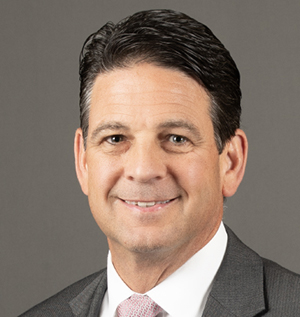Get our email updates
Stay up-to-date on the companies, people and issues that impact businesses in Syracuse, Central New York and beyond.
What's New
Upcoming Events
CNYBJ Job Board

OPINION: Trump’s America First Economic Priorities Winning Over Voters
As inflation slows and Americans begin to reap the benefits of President Donald Trump’s America First approach to creating jobs for native-born workers, voters are rallying behind the president’s approach. A new survey shows a majority of voters, including a majority of Hispanics, Blacks, young people, and independents, favor the Trump Administration’s focus on raising […]
Get Instant Access to This Article
Become a Central New York Business Journal subscriber and get immediate access to all of our subscriber-only content and much more.
- Critical Central New York business news and analysis updated daily.
- Immediate access to all subscriber-only content on our website.
- Get a year’s worth of the Print Edition of The Central New York Business Journal.
- Special Feature Publications such as the Book of Lists and Revitalize Greater Binghamton, Mohawk Valley, and Syracuse Magazines
Click here to purchase a paywall bypass link for this article.
As inflation slows and Americans begin to reap the benefits of President Donald Trump’s America First approach to creating jobs for native-born workers, voters are rallying behind the president’s approach.
A new survey shows a majority of voters, including a majority of Hispanics, Blacks, young people, and independents, favor the Trump Administration’s focus on raising employment among Americans born here, even if there are losses for foreign-born workers. Voters also trust Republicans over Democrats to handle the economy, and swing voters are moving toward the right compared to midterm elections in 2022 and 2018.
The survey, conducted by Quantus Insights from Aug. 11-14 among 1,000 registered voters finds strong support for President Trump’s approach to adding jobs for native-born citizens. Americans say by 33 points — 51 percent to 18 percent — they support the president’s policies that prioritize jobs for U.S.-born Americans. Another 32 percent say they are neutral on the issue.
The White House says native-born employment has risen by more than 2 million jobs since January, while foreign-born employment has dropped by half a million. The White House noted that during the same period in 2024, foreign-born workers were securing as many as 48 percent of new jobs created under the Biden Administration. Now, due to the president’s crackdown on illegal immigration, virtually all the job gains this year have gone to native-born citizens.
Majorities of swing votes, including young people, Hispanics, Blacks, independents and moderates all support the Trump Administration’s priority of raising employment among U.S.-born workers first, with only Democrats and liberals opposing the strategy, according to the survey.
African-Americans say by 30 points — 42 percent to 12 percent — they support the Trump Administration’s labor policies, and Hispanics support the administration’s policies by 28 points — a margin of 49 percent to 21 percent.
Young people ages 18-29 support the Trump Administration’s labor policies prioritizing American-born workers by 30 points — 47 percent to 17 percent — and voters ages 30-44 approve of the administration’s policies by 43 points — a margin of 57 percent to 14 percent.
Independents support the administration labor policies by 29 points — 43 percent to 14 percent — and moderates support the policies by 25 points — a count of 42 percent to 17 percent.
The survey also shows voters trust Republicans over Democrats to handle the economy by 5 points — an edge of 42 percent to 37 percent.
While the survey shows a narrow lead for Democrats in the generic Congressional ballot — 45 percent to 42 percent — there is reason to believe Democrats could suffer significantly compared to the previous midterm-election cycles. Key voter groups appear to be moving toward the right, according to the survey.
Black voters — while still broadly planning to support Democrats in the survey — are showing one of the largest shifts toward Congressional Republicans compared to how they voted in the 2022 midterm cycle. The Quantus survey reveals 17 percent of Black Americans plan to support Republicans, while 74 percent plan to support Democrats, which translates to Democrats winning their vote by 57 points. This is a substantial shift from just three years ago, when Democrats won Black voters by 73 points — a margin of 86 percent to 13 percent. Compared to 2018, the shift is even larger. Democrats won Black voters by 79 points — 90 percent to 11 percent — just eight years ago.
Young people are also showing much more interest in voting red next election cycle than they have in previous midterm cycles. The Quantus survey shows young voters still supporting Democrats next year, but by only 15 points — a margin of 52 percent to 37 percent. In 2022, Democrats won young people by 28 points — 63 percent to 35 percent according to CNN exit polls.
While Democrats and some in the GOP-establishment have fought President Trump every step of the way on his America First economic agenda, real job gains among Americans are rallying voters behind the president’s priorities. The public strongly favors Trump’s focus on raising employment among native-born Americans, including a broad coalition of swing voters.
Manzanita Miller is the senior political analyst at Americans for Limited Government Foundation, the research arm of Americans for Limited Government, a libertarian political advocacy group. The organization conducts policy research and publishes reports with the goal of reducing the size of the government.

UR Medicine Finger Lakes Health Foundation names new board member
GENEVA — UR Medicine Finger Lakes Health announced that its foundation board of directors has elected Mariana Hernandes Fortes Aurich as a new board member. She earned both her bachelor’s and master’s degrees in physiotherapy from the State University of Londrina in Paraná, Brazil, with her master’s focusing on the study of Parkinson’s disease. In
Get Instant Access to This Article
Become a Central New York Business Journal subscriber and get immediate access to all of our subscriber-only content and much more.
- Critical Central New York business news and analysis updated daily.
- Immediate access to all subscriber-only content on our website.
- Get a year’s worth of the Print Edition of The Central New York Business Journal.
- Special Feature Publications such as the Book of Lists and Revitalize Greater Binghamton, Mohawk Valley, and Syracuse Magazines
Click here to purchase a paywall bypass link for this article.
GENEVA — UR Medicine Finger Lakes Health announced that its foundation board of directors has elected Mariana Hernandes Fortes Aurich as a new board member.
She earned both her bachelor’s and master’s degrees in physiotherapy from the State University of Londrina in Paraná, Brazil, with her master’s focusing on the study of Parkinson’s disease. In addition, Aurich completed a residency in intensive care physiotherapy at Inspirar College in Brazil.
Aurich previously served as a research associate in the Neurosurgery Department at Yale University in New Haven, Connecticut.
Aurich, originally from Brazil, now lives in Victor with her husband, Dr. Lucas Aurich, neurosurgery director of Geneva General Hospital, and their son, Matheus.
The mission of the Finger Lakes Health Foundation is to cultivate, secure, and steward philanthropic gifts to support the capital, programmatic, and endowment needs of Finger Lakes Health, the organization says.

SUNY Broome fall semester enrollment rises 17 percent compared to a year ago
DICKINSON, N.Y. — SUNY Broome Community College says its enrollment for the fall semester is up 17 percent, a gain of 559 students, compared to

Excellus hires Centralus Health CEO for its chief healthcare services officer position
ROCHESTER, N.Y. — Excellus BlueCross BlueShield on Thursday named Dr. Martin Stallone executive VP, chief healthcare services officer of Excellus and its parent company, The Lifetime Healthcare Companies. He will start his new role on Dec. 1. Excellus is Central New York’s largest health insurer. Stallone is currently CEO of Centralus Health, a health-care system
Get Instant Access to This Article
Become a Central New York Business Journal subscriber and get immediate access to all of our subscriber-only content and much more.
- Critical Central New York business news and analysis updated daily.
- Immediate access to all subscriber-only content on our website.
- Get a year’s worth of the Print Edition of The Central New York Business Journal.
- Special Feature Publications such as the Book of Lists and Revitalize Greater Binghamton, Mohawk Valley, and Syracuse Magazines
Click here to purchase a paywall bypass link for this article.
ROCHESTER, N.Y. — Excellus BlueCross BlueShield on Thursday named Dr. Martin Stallone executive VP, chief healthcare services officer of Excellus and its parent company, The Lifetime Healthcare Companies.
He will start his new role on Dec. 1. Excellus is Central New York’s largest health insurer.
Stallone is currently CEO of Centralus Health, a health-care system formed through the affiliation of Cayuga Health of Ithaca and Arnot Health in Elmira. It includes five hospitals serving communities across New York’s Southern Tier, Finger Lakes, and Central New York regions.
In addition to his role as CEO of Centralus Health, Stallone served in a variety of leadership positions during his 17 years at Cayuga Health.
In his new position, Stallone will oversee Excellus BlueCross BlueShield’s health care-related functions including pharmacy services, provider network, quality programs, and medical services including member-care management. He’ll also oversee efforts to “more closely align” providers, insurers, and other health-care partners.
“As a local, nonprofit health plan, we increasingly partner with hospital systems and provider practices to help improve community health while tackling the growing challenge of rising healthcare costs,” Jim Reed, CEO and president of The Lifetime Healthcare Companies, said in the announcement. “We’re thrilled to welcome Dr. Stallone to our team … His clinical leadership in health care delivery, combined with his understanding of our regional health systems, will help us drive innovation and deepen our provider partnerships to better serve our communities in Central New York and throughout upstate New York.”

State Police arrest Elmira man for home-improvement fraud
HORSEHEADS, N.Y. — New York State Police in Horseheads announced they have arrested Bradley S. Baldwin, age 28, of Elmira, following an investigation into multiple

Ask Rusty: I’m Still Confused about Medicare Part A and Part B Enrollment
Dear Rusty: I’m age 64 and still working full time, and plan to continue working at least until I’m 70 — it’s a good job, and I enjoy it. My job comes with health insurance, so I don’t really need additional coverage, but I understand I will be required to sign up for Medicare Part
Get Instant Access to This Article
Become a Central New York Business Journal subscriber and get immediate access to all of our subscriber-only content and much more.
- Critical Central New York business news and analysis updated daily.
- Immediate access to all subscriber-only content on our website.
- Get a year’s worth of the Print Edition of The Central New York Business Journal.
- Special Feature Publications such as the Book of Lists and Revitalize Greater Binghamton, Mohawk Valley, and Syracuse Magazines
Click here to purchase a paywall bypass link for this article.
Dear Rusty: I’m age 64 and still working full time, and plan to continue working at least until I’m 70 — it’s a good job, and I enjoy it. My job comes with health insurance, so I don’t really need additional coverage, but I understand I will be required to sign up for Medicare Part A anyway when I turn age 65 next year. What I don’t understand is Part B. A colleague of mine, who is a little older than I am, said she signed up for Part B because a penalty will be incurred if we wait until we retire from our jobs and actually need the additional insurance. I’m not sure she’s right. Can you explain what I should do?
Signed: Confused About Medicare
Dear Confused: We’re happy to assist you with understanding this. First, enrolling in Medicare Part A (coverage for inpatient hospitalization service) is mandatory to collect Social Security after age 65. If you do not plan to take your Social Security benefits yet, you can defer enrolling in Part A until you claim Social Security. But Medicare Part A is also free to those eligible for Social Security, so there is little reason not to enroll in Part A at age 65 and, when you claim Social Security, you will be automatically enrolled.
Part B, which is coverage for outpatient health-care services (doctors, medical tests, etc.), is different. Part B is always optional because there is a premium associated with it (standard premium is $185 per month in 2025), but nearly everyone over age 65 requires health-care coverage. If, however, you are employed and have “creditable” health-care coverage from your employer (“creditable” is a group plan with more than 20 participants), then you can defer enrolling in Medicare Part B until your creditable employer coverage ends. And you can do so without incurring a “late enrollment penalty” for enrolling in Part B outside of your initial enrollment period. When your creditable coverage from your employer ends, you will enter an 8-month Medicare “special enrollment period,” which permits you to enroll in Part B without penalty.
Thus, as long as your employer coverage is “creditable,” you can defer enrolling in Part B without penalty. FYI, you can also enroll in Part B a couple of months prior to your employer coverage ending, asking that your Part B coverage starts when your employer coverage ends, to avoid any gap in health-care coverage. Note: you will likely need your employer to provide you with proof of creditable coverage when you later enroll in Part B.
A couple of extra thoughts: If you require prescription-drug coverage when your employer coverage ends after age 65, you only have 63 days to acquire that drug coverage without incurring a “Part D” (drug plan) late-enrollment penalty. So, if needed, you should not wait to get insurance coverage for prescription drugs after you employer coverage ends.
If you now have a health-savings account (HSA) through your employer, you should discontinue any HSA contributions well before (perhaps as much as six months before) your enrollment in Medicare Part A. That’s because Part A is not considered a “high deductible” insurance plan (a “high deductible” plan is a requirement for having an HSA). If you do not have an HSA, you need not be concerned about this. If you do, we can also provide you with more information on this.
I hope this answers your questions, but we are always here to assist if you need anything further. Contact us at SSAdvisor@amacfoundation.org, or at (800) 750-2622.
Russell Gloor is a national Social Security advisor at the AMAC Foundation, the nonprofit arm of the Association of Mature American Citizens (AMAC). The 2.4-million-member AMAC says it is a senior advocacy organization. Send your questions to: ssadvisor@amacfoundation.org.
Author’s note: This article is intended for information purposes only and does not represent legal or financial guidance. It presents the opinions and interpretations of the AMAC Foundation’s staff, trained, and accredited by the National Social Security Association (NSSA). The NSSA and the AMAC Foundation and its staff are not affiliated with or endorsed by the Social Security Administration (SSA) or any other governmental entity.

Adirondack Bank appoints MVHS financial executive to board of directors
UTICA — Adirondack Bank announced it has recently appointed Louis Aiello, senior VP and chief financial officer (CFO) at Mohawk Valley Health System (MVHS), as a new member of its board of directors. Aiello has more than 30 years of experience in finance and operations management, with specialized expertise in health-care financial leadership throughout Central
Get Instant Access to This Article
Become a Central New York Business Journal subscriber and get immediate access to all of our subscriber-only content and much more.
- Critical Central New York business news and analysis updated daily.
- Immediate access to all subscriber-only content on our website.
- Get a year’s worth of the Print Edition of The Central New York Business Journal.
- Special Feature Publications such as the Book of Lists and Revitalize Greater Binghamton, Mohawk Valley, and Syracuse Magazines
Click here to purchase a paywall bypass link for this article.
UTICA — Adirondack Bank announced it has recently appointed Louis Aiello, senior VP and chief financial officer (CFO) at Mohawk Valley Health System (MVHS), as a new member of its board of directors.
Aiello has more than 30 years of experience in finance and operations management, with specialized expertise in health-care financial leadership throughout Central New York, aligning with the bank’s commitment to supporting vital community-focused growth, Adirondack Bank said in its announcement.
In his current role as MVHS CFO, Aiello directs finance and operations for a $750 million operating budget while supervising critical departments, including patient access and financial services, and coordinating the necessary managerial support to deliver the highest quality of care to all patients. He was instrumental in the planning and financing of the $600 million Wynn Hospital, the announcement stated.
“The extensive financial management experience and community involvement that Lou brings to the Bank’s board will be extremely valuable in helping to carry out our mission of supporting the economic growth of our communities in the Mohawk Valley region, the Adirondack North Country, and Central New York,” Rocco F. Arcuri, Sr., president and CEO of Adirondack Bank, said.
Aiello is an active member of the Healthcare Financial Management Association and serves on multiple community boards, including The House of the Good Shepherd and Junior Junction Inc.
“I look forward to working with the Bank’s board and management in carrying out the Bank’s important role of providing financial products and services that meet the needs of the consumers, businesses, and municipalities that it serves,” Aiello said.
Founded in 1898, Adirondack Bank is a privately owned community bank with about $1 billion in assets that is headquartered in Utica. The bank operates 17 full-service and two limited-service branch locations in the counties of Oneida, Herkimer, Clinton, Essex, and Franklin, and a loan production office in Syracuse.

ConMed to pay dividend for third quarter of 2025 in early October
ConMed Corp. (NYSE: CNMD), a surgical-device maker originally based in the Mohawk Valley region, recently announced that its board of directors has declared a quarterly cash dividend of 20 cents per share for the third quarter of 2025. The dividend is payable on Oct. 3, to all shareholders of record as of Sept. 15. At
Get Instant Access to This Article
Become a Central New York Business Journal subscriber and get immediate access to all of our subscriber-only content and much more.
- Critical Central New York business news and analysis updated daily.
- Immediate access to all subscriber-only content on our website.
- Get a year’s worth of the Print Edition of The Central New York Business Journal.
- Special Feature Publications such as the Book of Lists and Revitalize Greater Binghamton, Mohawk Valley, and Syracuse Magazines
Click here to purchase a paywall bypass link for this article.
ConMed Corp. (NYSE: CNMD), a surgical-device maker originally based in the Mohawk Valley region, recently announced that its board of directors has declared a quarterly cash dividend of 20 cents per share for the third quarter of 2025.
The dividend is payable on Oct. 3, to all shareholders of record as of Sept. 15. At the company’s current stock price, the payment yields just under 1.5 percent on an annual basis.
ConMed is a medical technology company that provides devices and equipment for surgical procedures. Surgeons and other health-care professionals use the firm’s products in a variety of specialties, including orthopedics, general surgery, gynecology, thoracic surgery, and gastroenterology. ConMed reported net sales of $663.6 million in the first six months of 2025, up 3 percent from nearly $644.4 million in the first half of 2024.
Based in Largo, Florida since 2021, ConMed still operates a facility on French Road in New Hartford, where it was formerly headquartered.
VIEWPOINT: Trump aims to backstop domestic health-care pharmaceutical supply chain through new EO
We have seen plainly what happens when disasters interrupt domestic health-care supply chains: from N-95 masks to saline, our health-care system has struggled in the face of hurricanes and a pandemic, as just two recent examples, to maintain supplies essential to patient safety and care delivery. Cognizant of this history, on Aug.13, 2025, President Donald
Get Instant Access to This Article
Become a Central New York Business Journal subscriber and get immediate access to all of our subscriber-only content and much more.
- Critical Central New York business news and analysis updated daily.
- Immediate access to all subscriber-only content on our website.
- Get a year’s worth of the Print Edition of The Central New York Business Journal.
- Special Feature Publications such as the Book of Lists and Revitalize Greater Binghamton, Mohawk Valley, and Syracuse Magazines
Click here to purchase a paywall bypass link for this article.
We have seen plainly what happens when disasters interrupt domestic health-care supply chains: from N-95 masks to saline, our health-care system has struggled in the face of hurricanes and a pandemic, as just two recent examples, to maintain supplies essential to patient safety and care delivery. Cognizant of this history, on Aug.13, 2025, President Donald J. Trump introduced the Strategic Active Pharmaceutical Ingredients Reserve (SAPIR) through Executive Order (EO).
The initiative, focused on the pharmaceutical supply chain, aligns with the president’s focus on strengthening domestic industry and diminishing reliance on overseas vendors. In his first term, President Trump issued an analogous EO that laid the groundwork for the new EO, and the goal of the reserve is to bolster domestic supply of Active Pharmaceutical Ingredients (APIs).
Through the new EO the president tasks the Department of Health and Human Services to identify and keep fresh a list of more than two dozen critical drugs for which the SAPIR could facilitate emergency pharmaceutical production through a 6-month API stockpile. The order also calls for creation of such stockpiles in at least one SAPIR collection, with another proposed in the same EO.
If the EO is effectuated, health-care providers may find essential medicines easier to access in times of crisis. Providers are advised to consider how these stockpile shifts might affect their supply-chain access.
Kaydeen M. Maitland is an associate attorney in the Westchester office of the Syracuse–based law firm Bond, Schoeneck & King PLLC. She focuses her practice on health care and corporate law, specializing in transactional and regulatory matters. Gabriel S. Oberfield is a member (partner) in Bond’s New York City office. He counsels health-care clients on issues at the intersection of legal, policy, and operational affairs. This article is drawn from Bond’s website.

Syracuse, Watertown, Ithaca airports among New York facilities winning federal funding for projects
SYRACUSE, N.Y. — Airports serving Syracuse, Oswego County, Rome, Watertown, and Ithaca will use federal funding for improvement projects and equipment. The awards are part
Get our email updates
Stay up-to-date on the companies, people and issues that impact businesses in Syracuse, Central New York and beyond.
